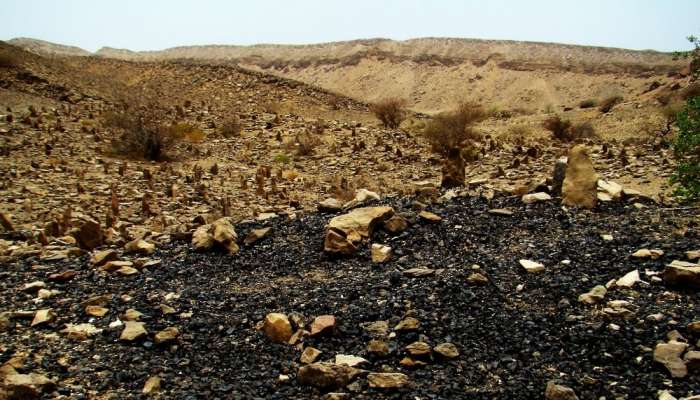A’Rustaq: The ancient copper industry in the Sultanate of Oman serves as compelling evidence of an advanced civilization that evolved into a leading industrial power nearly five thousand years ago.
Historical records from Sumerian and Assyrian civilizations document copper exports from Oman to Mesopotamia, while numerous archaeological sites across the country reveal extensive smelting remnants that testify to the industry's remarkable scale and sophistication.
The archaeological village of Al Manaqi in the Wilayat of A’Rustaq, South Al Batinah Governorate, represents one of Oman's most significant copper production sites. Situated amid several valleys, the village contains numerous ancient mines and smelting facilities, with thousands of tons of processing remnants still visible throughout the area.
According to Harith bin Saif Al Kharousi, a researcher in rock inscriptions and Omani history, Al Manaqi was selected for study as a representative example among hundreds of ancient copper smelting sites scattered across Oman. "Other significant locations include the Salut site in Wadi Nam, Wilayat of Al Qabil, North A’Sharqiyah Governorate, which similarly demonstrates Oman's long-standing copper production heritage," he noted.
Al Kharousi explained that ancient Omanis established smelting operations directly adjacent to copper mines to optimize efficiency, as evidenced near Wadi Mafa'al in Al Manaqi where mine remnants remain clearly visible. The sophisticated process involved transporting ore to nearby furnaces, purification, and then smelting using Samr wood - selected for its high resin content that generated the intense heat required for copper extraction, combined with specially designed furnace structures.
"Workers used bellows to maintain furnace temperatures and manage carbon dioxide levels," Al Kharousi detailed. "Given that copper content in the ore averaged only 7 percent, ancient smelters obtained less than 70 grams of copper from each kilogram of processed ore, even under ideal conditions." The molten copper was tapped through furnace openings and poured into clay molds, with copper-adhered pottery fragments still identifiable at the Salut site after thousands of years.
The researcher further noted that pure copper is a malleable yellow metal approximately half as dense as gold, naturally occurring in igneous rock formations. Copper production in Oman began approximately 5000 years ago, primarily processing ores such as malachite and azurite, with chrysocolla deposits serving as indicators of copper-bearing formations.
Al Kharousi emphasized that Oman's substantial ophiolite rock formations contain rich mineral deposits including chromium, gold, copper, manganese, and iron. This geological endowment underpinned the ancient industry that earned Oman the name "Magan" among Assyrian and Sumerian civilizations - meaning "the land of copper."
